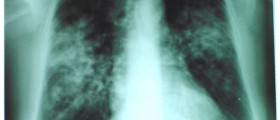
Although cellulitis and cellulite have similar names, these two conditions are quite different. Cellulitis is the medical term for the bacterial infection that affects the topmost layers of the skin but also the connective tissues which are under it, while cellulite is a cosmetic condition and refers to the dimpling of the skin. Cellulitis may also affect the lymph nodes and it occurs in severe cases.
Although it may appear everywhere on the body, face, arms and legs are most affected. It is induced either by bacteria present in our body or due to certain exogenous bacteria, especially on the areas where the skin is broken due to wounds, burns and insect bites, for instance.
Symptoms of cellulitis of the legs
When cellulitis affects the leg skin, it causes pain and tenderness in that area, which is usually accompanied by redness, swelling and warmth. The people with this disorder may experience rash, itching, fever and chills. It is not very serious when cellulitis just affects the superficial layers, but when it expends to the deep layers of the skin, it may affect the lymph nodes and bloodstream, and cause serious consequences. Sometimes, when cellulitis affects the lower legs, it is often mistaken for deep vein thrombosis since these two conditions have similar symptoms.
Causes of cellulitis of the legs
As we have already said, this condition is a bacterial infection so it is caused by bacteria. Streptococcus are the type of bacteria which can be found on our skin and in the throat, but which are not harmful when their amounts are kept under control. However, in situations in which the bacteria in question multiply itself, then it cause the infection.
Cellulitis may also be induced by the bacteria called Staphylococcus aureus, which can be found on our skin, but also in the mucus membranes. When cellulitis affects the children, it is mainly due to Haemophilus influenzae type B. Obesity, diabetes, weak immune system and many skin disorders are some of the factors that contribute to the development of cellulitis of the legs.
Treatment for cellulitis of the legs
Oral antibiotics are usually prescribed when the treatment of cellulitis is in question, since these medicines are good at killing bacteria. Furthermore, the affected leg should be rested and cold compresses may also be of great help. On the other side, when cellulitis is more complicated, it may also require the use of certain painkillers, intravenous therapy or even surgery in some severe cases.
- www.nhs.uk/conditions/cellulitis/
- www.betterhealth.vic.gov.au/health/ConditionsAndTreatments/cellulitis
- Photo courtesy of RafaelLopez by Wikimedia Commons: commons.wikimedia.org/wiki/File:Cellulitis3.jpg






_f_280x120.jpg)










Your thoughts on this
Loading...